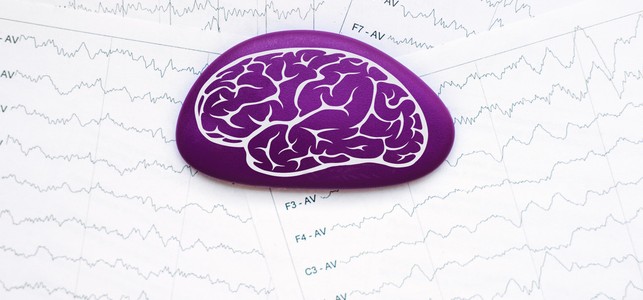
As part of National Epilepsy Awareness Month, our interim chief of child neurology, Dr. Monica Islam, answers these 7 questions about absence seizures, what causes them and how they can be treated.
What is an absence seizure?
An absence seizure is a type of seizure that many refer to as a staring spell. Unlike staring that relates to daydreaming or concentrating, absence seizures are caused by abnormal brain activity. Children who have them are usually otherwise healthy and normal in their development.
What do these types of seizures look like?
Unlike the seizures where the body may jerk, get stiff or go limp, absence seizures are more subtle, and you may only see a brief pause in activity or attention. Sometimes there may be abnormal movements in the eyes or mouth. There is no warning for these seizures and they’re usually very brief, lasting only 5 to 20 seconds at a time, sometimes multiple times in a day. Children with absence seizures often return to what they were doing immediately after the seizure - because of this they are easy to miss.
What do children who experience absence seizures say they feel like?
Most children with absence seizures won’t realize they are having them or recognize a gap in time or a task once the seizure is over. For the few who remember having a seizure, they compare the brief gap to hearing static on the radio. Others may not feel the actual seizure but may find people around them are looking at them with concern afterwards, and that may lead to the child feeling embarrassed or confused.
How do you determine that someone has had an absence seizure?
The most reliable way to diagnose absence seizures is with an EEG, which is short for electroencephalogram. This is a test involving about 20 electrodes being placed on different parts of the scalp to record brain electrical activity. The test can be performed in the outpatient setting and lasts about 30 minutes, in addition to the time that it takes to place and remove the electrodes.
Absence seizures are frequent enough that this test usually can capture typical examples, and they are more likely to occur with hyperventilation. That means during the EEG there may be a period of deep breathing such as by blowing on a pinwheel for several minutes to see if this might bring out an absence seizure. Hyperventilation sometimes can be tried in the doctor’s office even without having an EEG, but it usually is best to have a test to get the complete information.
What causes absence seizures?
Someone having absence seizures without a provoking cause has epilepsy, which is also known as a seizure disorder. These seizures are most common in young children who may have them starting around 4 to 8 years old. When the absence seizures are paired with certain EEG findings, the child may be diagnosed with childhood absence epilepsy but would likely not experience other types of seizures.
Children who develop the condition at a slightly older age and have certain types of EEG findings may be diagnosed with juvenile absence epilepsy. Patients who fit a pattern of childhood absence epilepsy are likely to outgrow the risk for seizures by the teenage years. Those who develop absence seizures later in life may continue to be at risk for absence seizures and other types of seizures even into adulthood.
Both epilepsy syndromes are considered genetic; however, there is not a specific genetic test and there may not be a family history of absence or other seizures.
How are these seizures treated?
After getting the appropriate testing and the right diagnosis, there are anti-seizure medications that work well for people with absence seizures. These medications are prescribed to be taken daily, even when the seizures may be subtle or under control.
Medications are not a cure for epilepsy. We prescribe them to keep the seizures from happening and we want to keep side effects to a minimum – especially since we may not know in the beginning if a child will outgrow the condition or if they are going to have a lifelong epilepsy.
Are there any long-term effects of absence seizures?
There are not long-term effects of the seizures themselves. Other than the seizures, children with absence epilepsy may be more likely to have difficulties with learning, attention, memory and mood. Sometimes the seizures contribute to this, but even when seizures are under control these may be issues to identify and address.
For example, a child with absence seizures also may have attention deficit hyperactivity disorder. It would be important to treat not only the seizures with anti-seizure medication, but also address the ADHD with school accommodations or medication. It is important to remember children with absence seizures often are otherwise healthy children. Even with a diagnosis of epilepsy, families should feel they can continue to engage in many normal age-appropriate activities.
Learn about the neurological conditions we treat at CHoR
